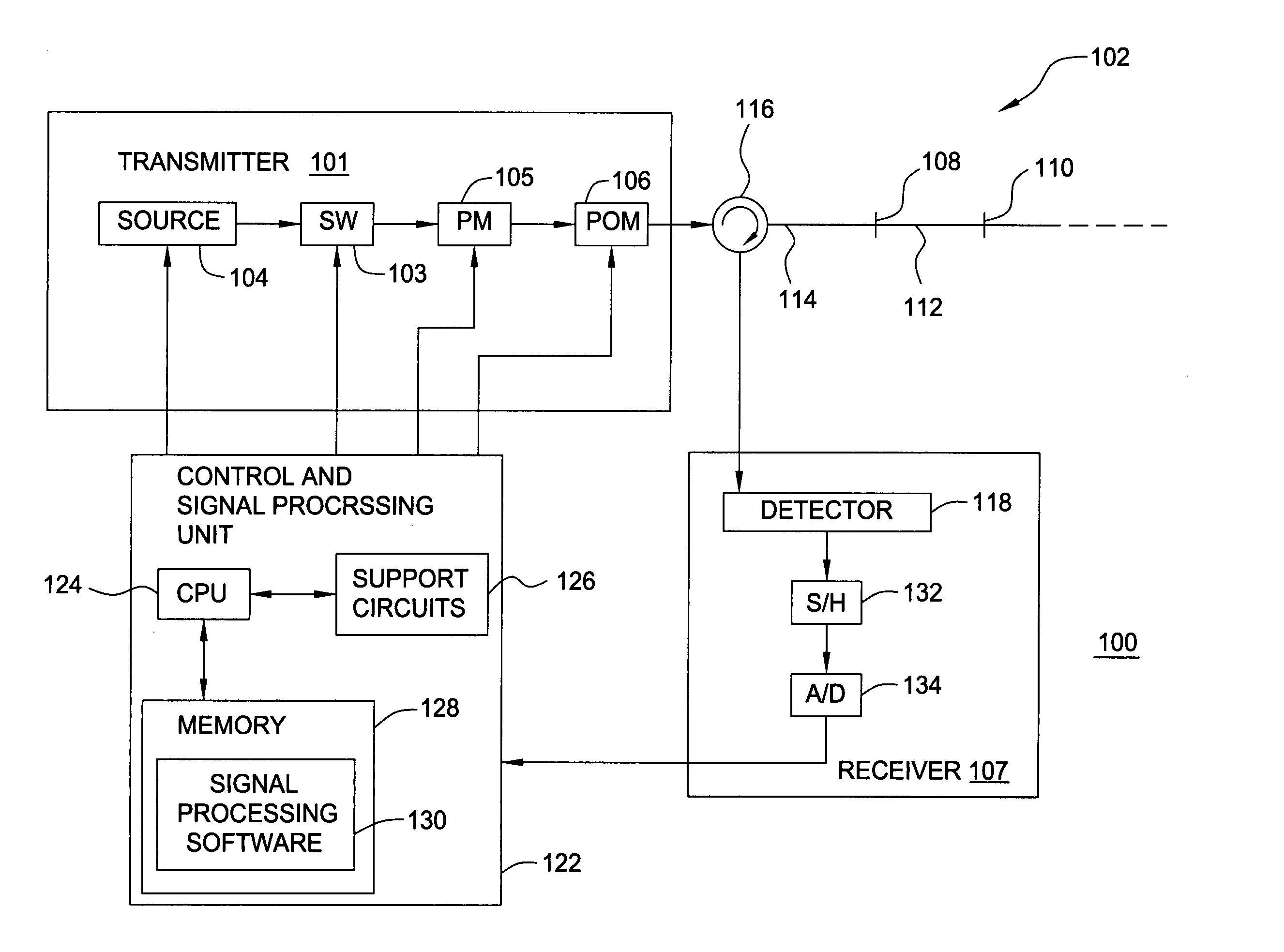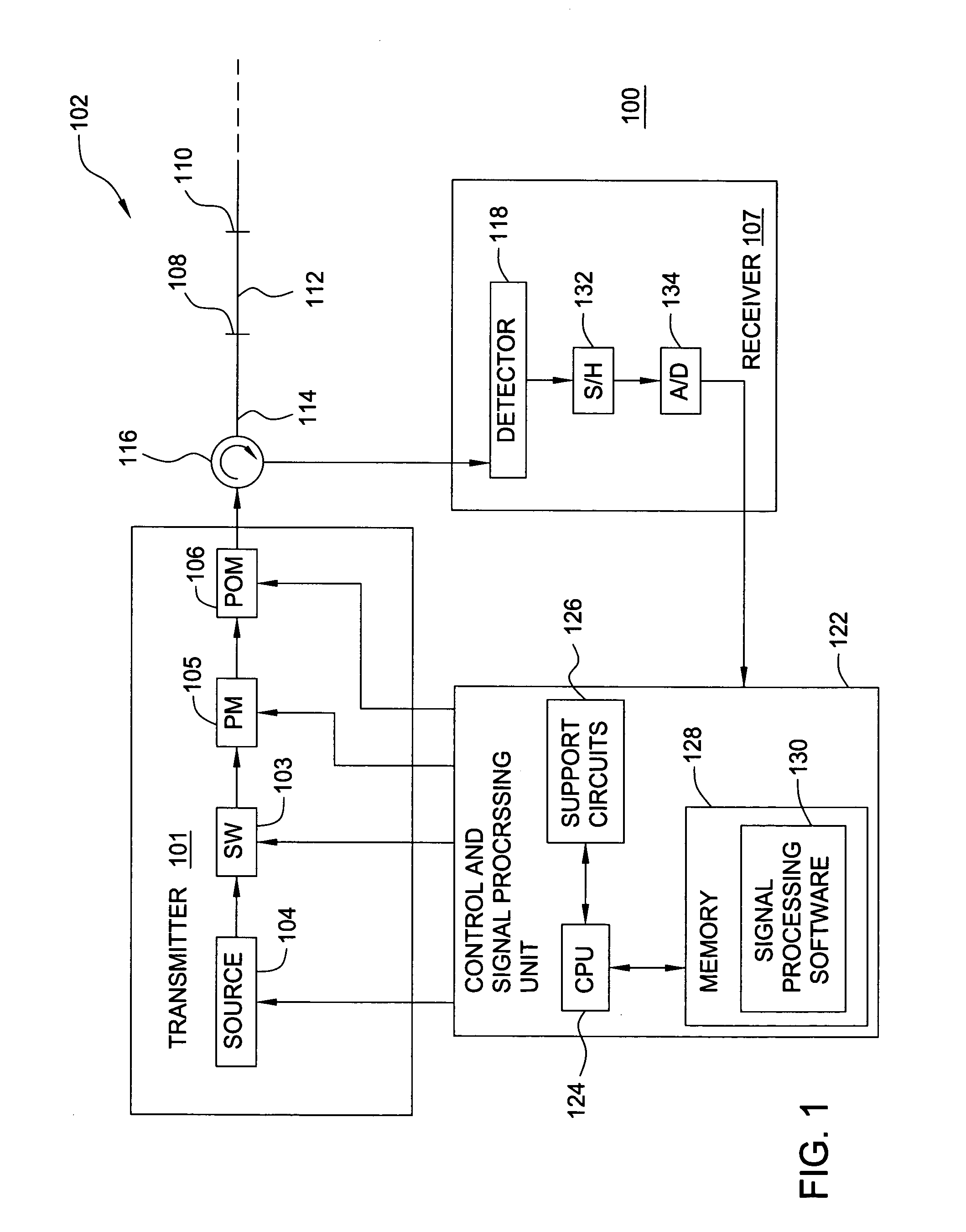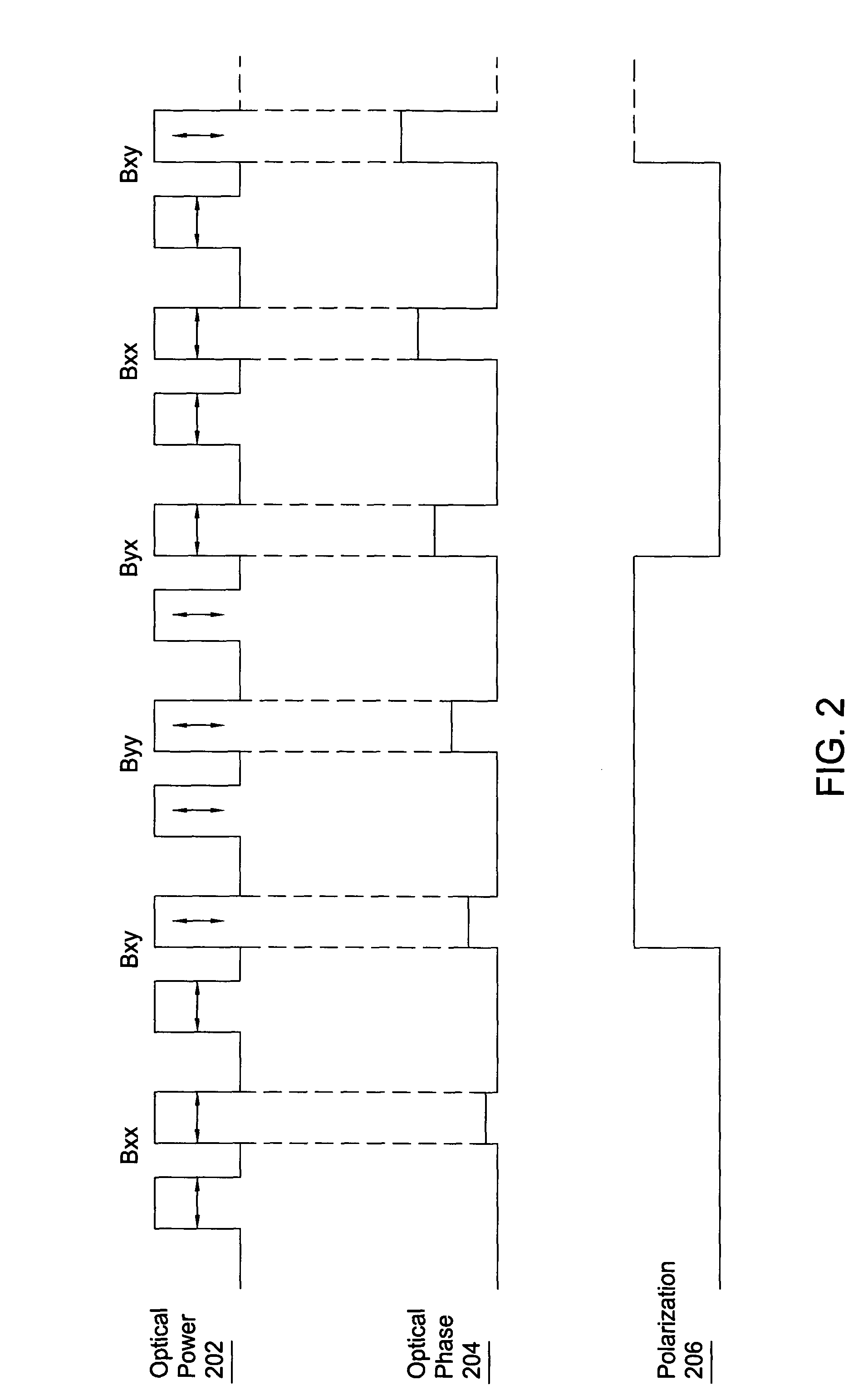Method and apparatus for providing polarization insensitive signal processing for interferometric sensors
a technology of interferometer and signal processing, applied in the field of interferometer, can solve the problems of fiber inducing phase noise, imbalance equal to time-delay experience, and unbalanced interferometer
- Summary
- Abstract
- Description
- Claims
- Application Information
AI Technical Summary
Benefits of technology
Problems solved by technology
Method used
Image
Examples
second embodiment
The first embodiment described above is based on having the SOPs of the interrogation pulses controlled individually so that two interfering pulses may originate from interrogation pulses that have different SOP. This embodiment only works for pulsed interrogation systems. FIG. 3 depicts a block diagram of the present invention. In this embodiment, the two interfering beams may originate from the same transmitter output SOP, and the modulation of the transmitter output SOP can be made independent of the sensor imbalance. This allows for this method to be used in combination with both pulsed TDM and other multiplexing techniques that employs a CW (continuous wave) source such as frequency division multiplexing (FDM) and wavelength division multiplexing (WDM). In FDM, the laser frequency is swept over a range larger than the free spectral range of the interferometers, and different electrical signal frequencies are generated at the detector corresponding to different delay difference ...
fifth embodiment
In a fifth embodiment, the response matrix R can be found if the transmitter output SOP is modulated through a set of states that can be represented by at least two independent Stokes vectors and set of eigenpolarizations of the polarization diversity receiver that can be represented by at least three independent Stokes vectors. This is the reciprocal version of the forth embodiment, and this embodiment will give the same set of measured signal components as the forth embodiment if the up-lead fiber replaces the down-lead fiber and visa versa.
In FDM systems, the laser can be swept over a range much larger than the free spectral range of the sensor, which gives a fringe signal with an electrical frequency at the detector that is proportional to the delay of the sensor. The phase of the fringe signal relative to the source frequency is a measure for the sensor phase. The frequency of the fringe signal provides a measurement of the delay of the sensor. See X. Wan et. al “Fiber-Bragg-G...
PUM
 Login to View More
Login to View More Abstract
Description
Claims
Application Information
 Login to View More
Login to View More - R&D
- Intellectual Property
- Life Sciences
- Materials
- Tech Scout
- Unparalleled Data Quality
- Higher Quality Content
- 60% Fewer Hallucinations
Browse by: Latest US Patents, China's latest patents, Technical Efficacy Thesaurus, Application Domain, Technology Topic, Popular Technical Reports.
© 2025 PatSnap. All rights reserved.Legal|Privacy policy|Modern Slavery Act Transparency Statement|Sitemap|About US| Contact US: help@patsnap.com



